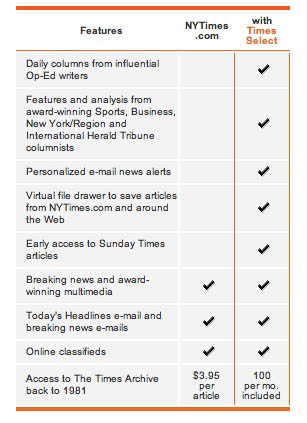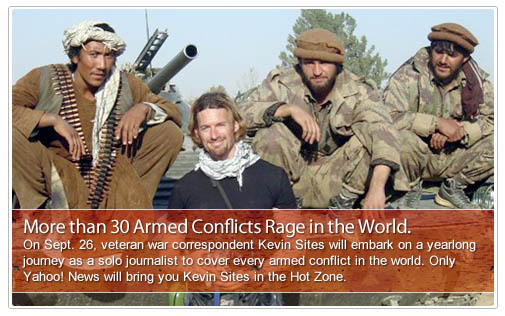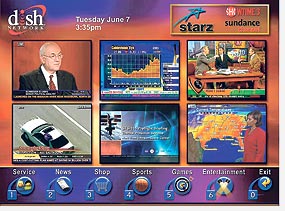5. Language is, first of all, a political question.
 Like the problem of hunger in the world, the problem with publishing in the United States isn’t one of supply but one of distribution.
Like the problem of hunger in the world, the problem with publishing in the United States isn’t one of supply but one of distribution.
What’s worried me lately: that I go to airport bookshops and always see the same books. Because I live in New York, I can go to any number of specialized bookshops & find just about anything I want. The same is not true in many other parts of the country; the same is certainly not true in many other parts of the world. What worries me about airport bookshops is how few books they carry: how narrow a range of ideas is presented. May God help you if you’d like to buy anything other than Dan Brown in the Minneapolis/St. Paul airport. This is an exaggeration, but not by much. James Patterson is also available, as are the collected works of J. K. Rowling, and, for a limited time, those of J. R. R. Tolkien.
Into this emptiness is paraded the miracle of electronic publishing. As pushed by Jason Epstein, amongst others, the idea of print-on-demand will solve the question of supply forever more – you could go to a bookstore, request a book, and Barnes & Noble would print it out for you. (Let’s not think about copyright for the moment.) Jason Epstein believes these machines will be small enough to fit into an airport bookstore. This hasn’t happened yet, and I’m doubtful that it will any time soon, if at all. Booksellers have the supply & distribution issue down cold for Brown & Patterson & J. K. Rowling – they have no incentive to invest in these machines. When was the last time you, member of the reading public, went to complain to Barnes & Noble about their selection?
Until this marvelous future creates itself out of publishers’ good will towards humanity, people are presenting texts online, with varying degrees of success. If you have a laptop in the MSP airport (& a credit card to pay for wireless internet there), or, for that matter, any computer connected to the internet, you can go to ubu.com and browse their archive of documents of the avant-garde. Among the treasures are /ubu editions, an imprint that electronically reprints various texts as PDFs. They’re free. I have a copy of Ron Silliman’s The Chinese Notebook, a reprint of a 26-page poem which originally appeared in The Age of Huts. Ubu reprinted it (and the other two parts of The Age of Huts) with Silliman’s permission.
6. I wrote this sentence with a ballpoint pen. If I had used another, would it be a different sentence?
/Ubu editions (edited by Brian Kim Stefans) aren’t really electronic books, and don’t conceive of themselves as such. Rather, they are a way of electronically distributing a book. This PDF is 8.5” x 11”. While you can read it from a screen – I did – it’s meant to be printed out at home & read on paper. That said, this isn’t a quick and dirty presentation. Somebody (a mysterious “Goldsmith”) has gone to the trouble of making it an attractive object. It has a title page with attractive, interesting, and appropriate art (an interactive study by Mel Bochner from Aspen issue 5–6; ubu.com graciously hosts this online as well). There’s a copyright page that explains the previous. There’s even a half title page – somebody clearly knows something about book design. (How useful a half title page is in a book that’s meant to be printed out I’m not sure. It’s a pretty half title page, but it’s using another piece of your paper to print itself.) There’s also a final page, rounding off the total to 30 pages; if you print this off double-sided, you’ll have your very own beautiful stack of paper.
(Which is better than nothing.)
8. This is not speech. I wrote it.
Silliman’s text is (as these quotes might suggest) a list of 223 numbered thoughts about poetry and writing that forms a (self-contained) poem in prose. It is explicitly concerned with the form of language.
Karl Marx anticipating Walter J. Ong: “Is the Iliad possible when the printing press, and even printing machines, exist? Is it not inevitable that with the emergence of the press, the singing and the telling and the muse cease; that is, that the conditions necessary for epic poetry disappear?” (The German Ideology, p. 150; quoted in Neil Postman’s A Bridge to the 18th Century: How the Past Can Improve Our Future).
17. Everything here tends away from an aesthetic decision, which, in itself, is one.
Silliman’s text is nicely set – not beautifully, but well enough, using Baskerville. Baskerville is a neoclassical typeface, cool and rational, a product of the 18th century. Did Silliman think about this? Was the designer thinking about this? Is this how his book looked in print? in the eponymous Chinese notebook in which he wrote it? I don’t know, although my recognition of the connotations of the type inflects itself on my reading of Silliman’s poem.
21. Poem in a notebook, manuscript, magazine, book, reprinted in an anthology. Scripts and contexts differ. How could it be the same poem?
Would Silliman’s poem be the same poem if it were presented as, say, HTML? Could it be presented as HTML? This section of The Age of Huts is prose and could be without too many changes; other sections are more dependent on lines and spacing. Once a poem is in a PDF (or on a printed page), it is frozen, like a bug in amber; in HTML, type wiggles around at the viewer’s convenience. (I speak of the horrors HTML can wreak on poetry from some experience: in the evenings, I set non-English poems (in print, for the most part) for Circumference.)
47. Have we come so very far since Sterne or Pope?
Neil Postman, in his book, wonders about the same thing, answers “no”, and explains that in fact we’ve gone backwards. Disappointingly, there’s little reference to Sterne in Postman’s book, although he does point out that Oliver Goldsmith’s The Vicar of Wakefield was more widely read in the eighteenth century: possibly the literary public has never cared for the challenging.
Project Gutenberg happily presents their version of Tristram Shandy online in a plain text version: at certain points, the reader sees “(two marble plates)” or “(two lines of Greek)” and is left to wonder how much the text has changed between the page and the screen. Sterne’s novel, like Pope’s poetry, is agreeably self-aware: how Sterne would have laughed at “(page numbering skips ten pages)” in an edition without page numbers. There are a few lapses in ubu.com’s presentation of Silliman, but they’re comparably minor: some of the entries in Silliman’s list aren’t separated by a blank space, leading one to suspect the pagination was thrown out of whack in Quark. When something’s free . . .
53. Is the possibility of publishing this work automatically a part of the writing? Does it alter decisions in the work? Could I have written that if it did not?
A writer writes to communicate with a reader unknown. Publishers publish to make money. These statements are not always true – there’s no shortage of craven writers if there’s a sad dearth of virtuous publishers – but they can be taken as general rules of thumb. Where does electronic publishing fit into this set of equations? Certainly when Silliman was writing this twenty years ago he wasn’t thinking seriously about distributing his work over the Internet.
(Silliman has, for what it’s worth, an excellent blog, suggesting that had the possiblity been around twenty years ago, he would have been thinking about it.)
56. As economic conditions worsen, printing becomes prohibitive. Writers posit less emphasis on the page or book.
Why does ubu.com’s reprinting of Ron Silliman’s poetry seem more interesting to me than what Project Gutenberg is doing? Even the cheapest edition of Tristram Shandy that I can buy looks better than what they put out. (Ashamed of their text edition, one supposes, they’ve put out an HTML version of the book, which is an improvement, but not enough of one that I’d consider reading it for six hundred pages.) More to the point: it’s not that hard to find a copy of Tristram Shandy. You can even find one in one of the better airport bookstores. It’s out of copyright and any would-be publisher who wants to can print their own version of it without bothering with paying for rights.
I could not, alas, go to a bookstore and buy myself a copy of The Age of Huts because it’s been out of print for years. Thanks a lot, publishing. Good work. I could go to Amazon.com and buy a “used/collectible” copy for $113.20 – but precisely none of that money would go to Ron Silliman. But I don’t want a collectible copy: I’m interested in reading Silliman, not hoarding him. (Perhaps I start to contradict myself here.)
223. This is it.
But there are still questions. How do we ascribe value to a piece of art in a market economy? Are Plato’s ideas less valuable than those of Malcolm Gladwell because you can easily pick up the collected works of the first for less than 10% of what the two books of the second would cost you? when you can download old English translations for free on the Internet?
How valuable is a free poem on the Internet? How much more valuable is an attractive edition of a free poem on the Internet? even if you have to print it out to read it?
Why aren’t more people doing this?

 Like the problem of hunger in the world, the problem with publishing in the United States isn’t one of supply but one of distribution.
Like the problem of hunger in the world, the problem with publishing in the United States isn’t one of supply but one of distribution.


